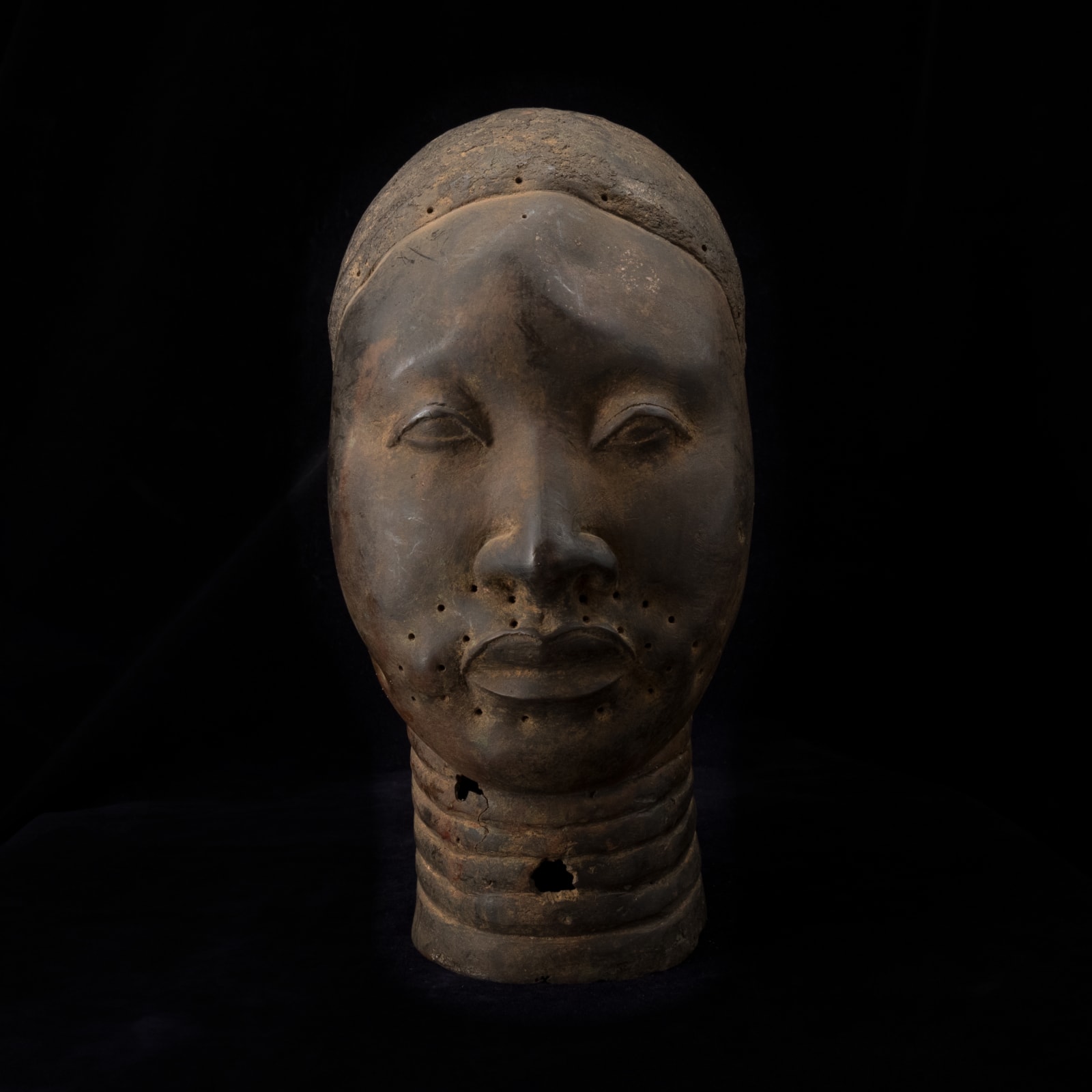Female Yoruba Head, Nineteenth Century AD
Bronze
29.5 x 13.8 x 21.5 cm
11 5/8 x 5 3/8 x 8 1/2 in
11 5/8 x 5 3/8 x 8 1/2 in
ES.3401
Further images
The Yoruba people inhabit what is now Nigeria, Benin, and Togo. They are one of the largest ethnic groups in Africa, and one of the most ancient. Already by the...
The Yoruba people inhabit what is now Nigeria, Benin, and Togo. They are one of the largest ethnic groups in Africa, and one of the most ancient. Already by the Eighth Century AD, there was a Yoruba kingdom centred on Ife in Nigeria. The Yoruba were among the most urbanised groups in Africa; their society centred on powerful city-states (ilu) centred around the residence of the King (oba). These cities, the largest in Sub-Saharan Africa, were highly fortified and regularly warred, but also became centres of art and commerce. Yoruba artistic production is famous for bronze heads, thousands of which came to light in the Twentieth Century AD. Yoruba artworks undermined the patronising, paternalistic notions of Western art historians towards African art, showing a real sensitivity to realism and an elegance of form.
This beautifully formed bronze head depicts a young woman. She has a plump, round face, with small sad almond-shaped eyes, a long flat nose, and thick lips. Her ears are small and set far back on the head. Her long, slender neck has rings around it. Her short hair is cropped closely to the head. There is a line of holes along the hairline, and two rows of holes around the mouth, extending along the jawline. There is a dent on the left hand side of the forehead, four small holes in the neck, and a large hole at the back of the head. The tranquil, introspective, gaze represents what the Yoruba considered the ideal inner qualities. Yoruba heads were either parts of larger sculptures, or more often were freestanding pieces, as here.
For the Yoruba, the head (ori) was the seat of the intellect and the location of the divine power (ase) within the individual. This divine power controlled the personality and destiny, and constitutes the life force. Three modes of representing the head are present in Yoruba art. The naturalistic style, as in this case, refers to the physical head (ori ode); the stylized form, which represents the inner, spiritual head (ori inu); and the abstract, which symbolises the primeval material from which the inner head was made (oke ipori). The prominence of the head in Yoruba sculpture therefore represents both the physical and the spiritual planes, connecting the inner and outer selves.
References: similar Yoruba heads can now be found in Minneapolis (Minneapolis Institute of Art 95.84, terracotta from the fifteenth century) and in Lagos (National Museum, Lagos 38.1.8, male head).
This beautifully formed bronze head depicts a young woman. She has a plump, round face, with small sad almond-shaped eyes, a long flat nose, and thick lips. Her ears are small and set far back on the head. Her long, slender neck has rings around it. Her short hair is cropped closely to the head. There is a line of holes along the hairline, and two rows of holes around the mouth, extending along the jawline. There is a dent on the left hand side of the forehead, four small holes in the neck, and a large hole at the back of the head. The tranquil, introspective, gaze represents what the Yoruba considered the ideal inner qualities. Yoruba heads were either parts of larger sculptures, or more often were freestanding pieces, as here.
For the Yoruba, the head (ori) was the seat of the intellect and the location of the divine power (ase) within the individual. This divine power controlled the personality and destiny, and constitutes the life force. Three modes of representing the head are present in Yoruba art. The naturalistic style, as in this case, refers to the physical head (ori ode); the stylized form, which represents the inner, spiritual head (ori inu); and the abstract, which symbolises the primeval material from which the inner head was made (oke ipori). The prominence of the head in Yoruba sculpture therefore represents both the physical and the spiritual planes, connecting the inner and outer selves.
References: similar Yoruba heads can now be found in Minneapolis (Minneapolis Institute of Art 95.84, terracotta from the fifteenth century) and in Lagos (National Museum, Lagos 38.1.8, male head).













